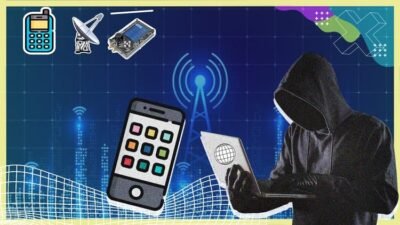Dive into the fascinating world of Software Defined Radio (SDR) with the comprehensive course “Mastering Software Defined Radio (SDR): GNU Radio and SDR++” available on Udemy. Whether you’re a curious beginner or an intermediate learner looking to expand your technical skills, this course offers a deep exploration of SDR technology, providing you with the knowledge and tools necessary to start your journey into the realm of radio communications. Let’s explore what you can expect from this enriching learning experience.
What you’ll learn
In this course, you will acquire a broad set of skills centered around SDR technologies. Key learning outcomes include:
-
Fundamentals of SDR: Understand the basic concepts of software-defined radio, including its architecture, components, and advantages over traditional radio systems.
-
GNU Radio: Gain hands-on experience with GNU Radio, an open-source toolkit that allows you to design, simulate, and implement SDR applications. You’ll learn how to build signal processing applications using graphical block diagrams and Python code.
-
SDR++: Explore SDR++ and how it complements GNU Radio, with a focus on its flexibility and support for various SDR hardware. You will learn how to configure and optimize components for optimum performance.
-
Signal Processing Techniques: Delve into advanced topics such as modulation, demodulation, filtering, and digital signal processing. This knowledge is crucial for effectively working with different types of signals.
-
Real-World Applications: Understand how SDR is applied in various fields such as telecommunications, emergency services, and even amateur radio, allowing you to see the practical applications of your newfound skills.
- Development and Debugging: Learn important techniques for developing and debugging SDR applications, ensuring that you can troubleshoot and solve problems effectively.
These targeted skills will equip you with a solid foundation in SDR, making you proficient in both the theoretical and practical aspects of this exciting technology.
Requirements and course approach
Before enrolling, it’s beneficial to have some familiarity with programming and basic electronics, though the course is designed to be accessible to a wide audience. You will need:
- A computer (Windows, Mac, or Linux) capable of running GNU Radio and SDR++.
- Basic knowledge of Python programming is recommended but not obligatory.
The course adopts a hands-on approach, with a mix of video lectures, practical examples, and real-life projects that encourage active learning. You will engage in step-by-step tutorials that help cement your understanding of both GNU Radio and SDR++. With engaging visual aids and clear explanations, the course makes complex concepts digestible. As you progress, you will find check-in points to reinforce what you have learned and ensure you are on the right track.
Who this course is for
This course is perfect for a variety of individuals, including:
-
Beginners in SDR: If you’re new to software-defined radio and want to understand the principles behind it, this course provides a solid groundwork.
-
Intermediate Learners: If you have some experience in radio communications or software development and are looking to deepen your knowledge of SDR technologies, this course offers advanced insights and practical applications.
-
Engineering Students: Those studying electrical engineering or telecommunications will find this course aligns well with their curriculum, providing valuable supplemental knowledge.
- Hobbyists and Enthusiasts: Anyone passionate about radio communications, electronics, or programming will gain hands-on experience and practical skills applicable to real-world projects.
Overall, this course caters to a diverse audience, making it a versatile addition to your learning journey.
Outcomes and final thoughts
By the end of “Mastering Software Defined Radio (SDR): GNU Radio and SDR++,” you will have gained the confidence and skills to design and implement your own SDR applications. You will not only understand the technical underpinnings of modern radio communication methods but also how to leverage these technologies for various practical applications.
In conclusion, this course stands out for its balanced approach of theory and practice, thorough content, and supportive learning environment. It’s a must for anyone looking to break into the world of SDR, making complex concepts accessible and engaging. Whether you aspire to a career in communications, electronics, or just want to explore a new hobby, this course will empower you with the knowledge and tools necessary to excel in the dynamic field of software-defined radio.














